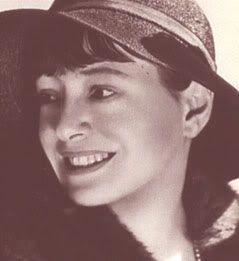This day in history, June 28, 1969, the first punch was thrown in the historic Stonewall Riots. Some say it was a drag queen, others a butch lesbian, and still others say it was some less gender-bending gay man.
The event is still a hot topic of debate in gay circles, with much disagreement about what actually precipitated the violence and who took part in it. One legend holds that Judy Garland's funeral, held June 27 in Manhattan, fanned the flames of gay rage. Other versions of the story claim that dozens of sequined drag queens and a mysterious, unidentified butch lesbian were at the forefront of the street rebellion. But a few facts seem certain.
In the early morning hours of June 28, 1969, the police raided the Stonewall Inn, a dingy, Mafia-run "private club" on Christopher Street in Greenwich Village with a predominantly gay clientele. The charge was illegal sale of alcohol. It was the second time that week the bar had been targeted by the police, and other gay bars had also been raided in prior weeks. Police officers lined up the Stonewall's 200 patrons to check identification. Most were free to leave, but the staff, as well as three drag queens and two male-to-female transsexuals, were detained.
Eyewitnesses recalled that the scene outside the bar was at first campy and festive. Patrons were joined by tourists and passers-by, and everyone cheered when a gay person emerged from the bar, dismissed by the police. But when a paddy wagon arrived and the police loaded the bar's staff and the three drag queens inside, the crowd on the street grew surly. One person threw a rock through a window, and eventually garbage cans, bottles, and even a parking meter were used to assault the building. Someone set a fire with lighter fluid. By newspaper accounts, 13 people were arrested and three police officers sustained minor injuries in the confrontation.
Later that night and into Sunday morning, a crowd again gathered in front of the ravaged bar. Many young gay men showed up to protest the flurry of raids, but they did so by handholding, kissing, and forming a chorus line. "We are the Stonewall girls," they sang, kicking their legs in front of the police. "We wear our hair in curls./We have no underwear./We show our pubic hair." Police cleared the street without incident this time, but another street altercation occurred a few days later.
Whatever or whomever tripped the wire on that violent rebellion, it had been a long time in coming. The gay rights movement had been underway and making political gains for some years, but an up-tick in bar raids that summer was wearing on the community. The iconic riots were a tipping point; a catalyst for the nascent movement.
Today's drag queens can turn their attention to other challenges. In May, a Minneapolis synagogue sponsored a drag show show to raise funds for Darfur. From Truthdig:
Cpl. Buju Ceesay wants to meet the young men who gyrated in sequin ball gowns and stilettos for his sake. They worship at a synagogue in Minneapolis, Minn.; he prays at a mosque in Banjul, Gambia. They are high school activists; he’s a 27-year-old peacekeeper with the African Union in Darfur. But even across 5,000 miles and a yawning cultural chasm, Cpl. Ceesay is pleased to hear about the “Drag Ball for Darfur” held at Congregation Shir Tikvah in May. Dancing across the stage in outrageous costumes, the students raised more than $7,000 for the Genocide Intervention Network, which in turn finances firewood patrols like the ones Ceesay conducts for the African Union Mission in Sudan (AMIS). “These patrols are the only way for us to protect women in the camps from rape and abduction as they venture out in search of sticks and twigs for their cooking,” the Gambian soldier explains. “But the African Union lacks the funds and morale to keep [the patrols] going, so we’ll take any help we can get ... including drag queens.”










0 comments:
Post a Comment